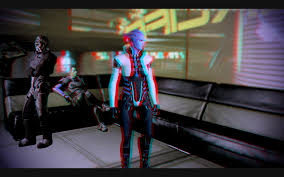Tropic Thunder is a biting satire on the state of Hollywood filmmaking and prima donna status if big name actors in the industry, and amid all the controversy you would expect the film to have little more edge to it. Not to sell Ben Stiller’s writing-directing-producing work short, the film is very well done, and nearly every joke hits its mark, but you wonder if more than a few punches were pulled at the last minute to guarantee all those involved would actually be able to work in the industry they were skewering again.

Stiller stars as Tugg Speedman, a lagging action star responsible for the ubiquitous Scorcher series of films now in its sixth installment as the pre-movie faux trailers tell us. Speedman took a disastrous turn as a “full retard” in Simple Jack an award-fishing expedition lambasted as one of the worst films ever made. Speedman signs on to Tropic Thunder (also the name of the movie within the movie) to rejuvenate his career alongside one-joke comedian Jeff Portnoy (Jack Black) who farts a lot and Australian method actor Kirk Lazarus (Robert Downey, Jr.) who dons blackface and a clichéd African-American persona. The internal film’s director, Damien Cockburn (Steve Coogan) receives and ultimatum from studio head Les Grossman (scene stealing Tom Cruise) leading Cockburn to drop his actors in the middle of a drug warfare zone and shoot the film guerilla style.
All of the leads bring their A-game but it’s the roles by Downey, Jr., Cruise, and supporting roles of Jay Baruchel and Danny McBride that really propel the movie to the next level. Cruise’s involvement was meant to be kept a secret to surprise the audience, and even with pictures on the net and syndicated reporting, you could still hear “That’s Tom Cruise!” exclaimed throughout the theater when he first appears litter the room with profanities. Coming off Iron Man, Robert Downey, Jr. look to continue his career high with an excellent portrayal of method actors and the extreme lengths they go through to preserve the illusion on and off camera. Baruchel, late of Knocked Up and TV’s Undeclared, plays the straight man in the ensemble and McBride, seen only last week in Pineapple Express brings the pyro-obsessed FX-master Cody to life.

The opening segments of the film are the most rewarding with the trailers highlighting the careers of each of the three leads and the in-movie filming of the big finale of Tropic Thunder complete with a $4 million dollar explosion (in which the camera wasn’t rolling) offer up the most laughs. As the film progresses and the characters become aware that they are no longer actors in a guerilla style war film, but civilians being captured by drug runners the movie loses a little bit of the spark that initially drew you in, the satire is gone as the film devolves into your basic war-time comedy.
One of the problems is the characters are never really developed beyond their eccentricities, Speedman is the classic action star looking for a serious role and recognition and respect, Lazarus is the quirky Australian who excels at acting naturally, and Portnoy is basically a combination of Belushi and Farley rolled into the flatulent stylings of Eddie Murphy. The secondary characters play one note throughout, and while these notes are funny, it only lends to the belief that so much more could have been done with this picture.

Just like the beginning the ending also brings a host of laughs as a mock Oscar ceremony finds our heroes sometime after the completion of the film and a final dancing scene presents the credits to you in one of the most disturbing manners possible.
The hype that has preceded Tropic Thunder may be its biggest enemy as its almost impossible to live up to the expectations of being a razor-sharp satire on movie making. At the core this is what Stiller and company were going for, but in reality the audience is treated to a fair amount of satire before just settling for what we get.
















